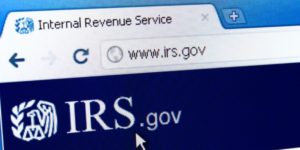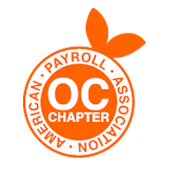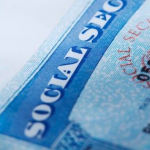
The Internal Revenue Service (IRS) issued Notice 2020-54, which requires employers to separately report Qualified Sick Leave Wages and Qualified Family Leave Wages paid under the Families First Coronavirus Response Act[1](FFCRA) on 2020 Forms W-2, Box 14, or on a separate statement.
This reporting is intended to provide employees who are also self-employed with information necessary to properly claim any FFCRA sick or family leave credits. There are three types of paid sick or family leave wages that should be separately reported (if applicable) in Box 14:
- Sick leave wages subject to the $511 per day limit because of care the employee required;
- Sick leave wages subject to the $200 per day limit because of care the employee provided to others; and
- Emergency family leave wages up to $200 per day and $10,000 in the aggregate.
Background
The FFCRA requires employers with fewer than 500 employees to provide paid leave if an employee is unable to work or telework due to circumstances related to COVID-19. Paid leave requirements and the related tax credit vary depending on the reason for leave:
- Sick leave wages up to $511 per day ($5,110 in the aggregate) because of care required for the employee; i.e., the employee:
- is subject to a federal, state or local quarantine or isolation order related to COVID-19;
- has been advised by a health-care provider to self-quarantine due to concerns related to COVID-19;
- is experiencing symptoms of COVID-19 and seeking a medical diagnosis;
- Sick leave wages at two-thirds of the employee’s regular rate of pay, up to $200 per day and $2,000 in the aggregate, for care that the employee provided to others; i.e., the employee:
- is caring for an individual who is subject to a quarantine or isolation order related to COVID-19, or has been advised by a health-care provider to self-quarantine related to COVID-19;
- is caring for a son or daughter if the school or child-care facility has been closed or the child-care provider is unavailable due to COVID-19; or
- is experiencing any other substantially similar condition specified by the Department of Health and Human Services (HHS).[2]
- Expanded paid family and medical leave at two-thirds of the employee’s regular rate of pay, to a limit of $200 per day and $10,000 in aggregate, if the employee is unable to work or telework because the employee is caring for a son or daughter whose school or child-care facility is closed related to COVID-19.
FFCRA Tax Credits Fully Offset Paid Leave
Eligible private-sector employers are entitled to fully refundable tax credits toward employment taxes to cover the cost of FFCRA leave, including qualified sick and family leave wages, plus allocable qualified health-plan expenses. FFCRA wages are exempt from employer Social Security taxes but are subject to employer Medicare taxes. However, the tax credit is increased by the employer’s share of Medicare tax on qualified leave wages.
Reporting Requirements
In order to provide self-employed individuals who also receive wages or compensation as employees with the information they need to properly claim any qualified sick or family leave credits for which they are eligible, IRS Notice 2020-54 requires employers to report to employees the amount of qualified sick leave wages and qualified family leave wages paid to the employees.
Self-employed individuals are also eligible for a refundable tax credit for qualified sick and family leave amounts. If a self-employed individual is eligible for a refundable credit for FFCRA sick leave and also receives qualified sick leave wages as an employee, the credit amount for the self-employed individual is reduced.
FFCRA amounts must be separately reported either in Box 14 of Form W-2 or on a separate statement, with the following descriptions (or similar language):
- Sick leave wages paid because of care required for the employee; described as “sick leave wages subject to the $511 per day limit.”
- Sick leave wages for care the employee provided to others, described as “sick leave wages subject to the $200 per day limit.”
- Qualified family leave wages, described as “emergency family leave wages.”
Employers must separately state each of these wage amounts either on Form W-2, Box 14 or on a separate statement. If a separate statement is provided and the employee receives a paper Form W-2, the statement must be included with the Form W-2 sent to the employee. If the employee receives an electronic Form W-2, then the statement must be provided in the same manner and at the same time as the Form W-2.
Model Language for Employee Instructions
As part of the Instructions for Employee, under the instructions for Box 14, for Forms W-2 or in a separate statement sent to the employee, the employer may provide additional information about qualified sick and family leave wages and explain that these wages may limit the amount of credits to which the employee may be entitled with respect to any self-employment income. The following model language (modified as necessary) may be used:
“Included in Box 14, if applicable, are amounts paid to you as qualified sick leave wages or qualified family leave wages under the Families First Coronavirus Response Act. Specifically, up to three types of paid qualified sick leave wages or qualified family leave wages are reported in Box 14:
- Sick leave wages subject to the $511 per day limit because of care you required;
- Sick leave wages subject to the $200 per day limit because of care you provided to another; and
- Emergencyfamily leave wages.
If you have self-employment income in addition to wages paid by your employer, and you intend to claim any qualified sick leave or qualified family leave equivalent credits, you must report the qualified sick leave or qualified family leave wages on Form 7202, Credits for Sick Leave and Family Leave for Certain Self-Employed Individuals, included with your income tax return and reduce any qualified sick leave or qualified family leave equivalent credits by the amount of these qualified leave wages.”
For further information, see IRS Notice 2020-59.
Courtesy of “ADP”











